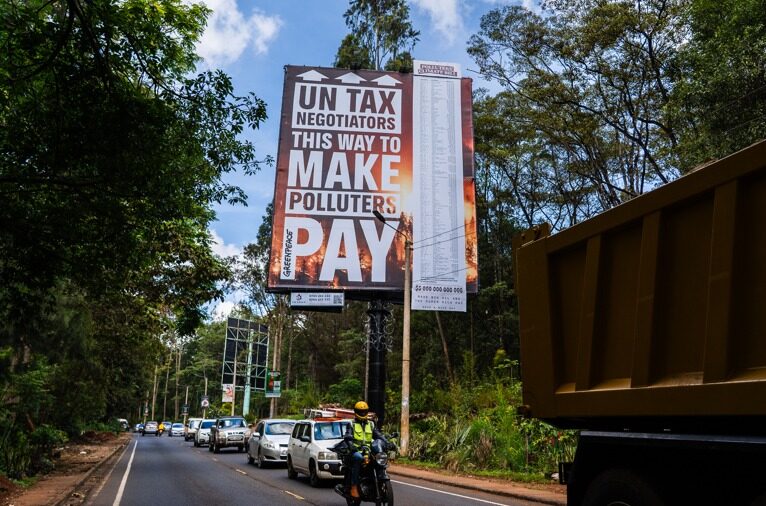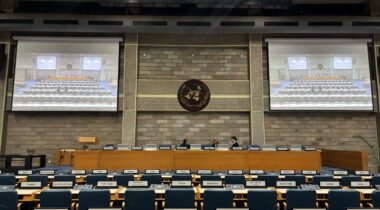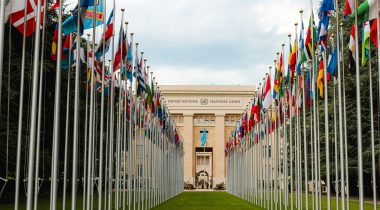

Bemnet Agata, Amos Wemanya ■ Two Negotiations, One Crisis: COP30 and the UN Tax Convention Must Finally Speak to Each Other

Last week, governments negotiated climate finance in Belém and new global tax rules in Nairobi. The coincidence of these talks happening at the same time — yet with almost no structured conversation between them — shows how fragmented the global response to climate action remains.
Climate negotiators discuss financing needs without asking where predictable public resources will come from, while tax negotiators debate revenue rules without acknowledging the rising costs of the climate crisis.
Treating these as separate worlds is no longer viable. Both deal with cross-border harms and deep inequality, and both require cooperation grounded in equity and responsibility.
The world cannot afford to keep the two frameworks disconnected.
What tax negotiations can learn from climate governance
The climate regime learned early that unequal responsibility cannot be ignored. Under the Paris Agreement, global goals are paired with nationally determined plans. The system links international expectations with domestic realities.
International taxation never made this leap. Failures to cooperate have allowed multinational corporations and wealthy individuals to underpay tax by shifting profits to low-tax jurisdictions and hiding wealth behind secrecy. As a result, countries lose an estimated US$492 billion each year to cross-border tax abuse, according to Tax Justice Network research. These losses directly undermine governments’ ability to fund the climate action, social protection, care systems, and economic diversification essential for a just transition.
With this round of Nairobi negotiations now concluded, countries have signalled a rare opportunity to advance a stronger UN tax convention—one that delivers fairer rules on taxing rights, tackles profit shifting and strengthens transparency.
The convention represents a historic chance to shift the burden from ordinary people to those who profit most from pollution and extraction, and to build an international system that restores countries’ tax sovereignty—the ability of states to use tax to deliver on their people’s aspirations.
Subnational leaders are already doing it
Cities, states and regions are carrying the weight of climate action. They build early-warning systems, reinforce infrastructure, manage disaster response, and support communities through heatwaves, floods and droughts. In practice, this means that the vast majority of climate implementation takes place at the subnational level—in some countries this accounts for 70% or more of climate-significant public expenditure, rising to over 80% in cases. Yet these same actors receive only around 10% of climate finance.
This mismatch is structural. Global climate finance is built around national governments and large international funds, with access that is slow, complex and tilted toward institutions with high administrative capacity. Local authorities dealing with climate impacts every day are left without the stable resources they need.
Despite this, subnational governments are modelling innovative approaches to fair climate finance. In India, the state of Kerala applies a 1 per cent flood levy to most goods and services sold within the state, using the revenue to rebuild homes, roads and schools after major floods and to strengthen community readiness for future shocks. In London, drivers of high-emitting vehicles pay a charge under the Ultra Low Emission Zone, and the net revenue is legally ring-fenced and reinvested across the city to improve air quality and strengthen local climate-resilience efforts. These examples show how small, well-designed levies can generate stable public revenue and ensure those with greater responsibility contribute more.
These local approaches matter far beyond their borders. They show that progressive, people-centred taxation can be implemented at scale and can complement national and international systems. They are blueprints for how global rules could be designed to be more equitable and more closely aligned with lived realities.
Global South leadership on solidarity levies shows what climate and tax reform can achieve
A coalition of eight countries—including Kenya, Colombia, Barbados, the Dominican Republic, Mozambique, Tanzania, France, and Spain—launched the Premium Flyers Solidarity Coalition, backing levies on business class, first class and private jet travel. These charges target the highest emitters and, if coordinated across willing countries, could raise around €121 billion a year, depending on design—offering a major new source of finance for adaptation, resilience and loss and damage.
This approach builds on existing practice: more than 52 countries already apply some form of aviation levy. Several governments in the Global South are now examining just and equitable air-passenger levies that place higher costs on higher-income and higher-emitting travellers. In Kenya, for example, a new air ticket fee to benefit the tourism industry charges KSh 600 (about US $4) for domestic flights and KSh 6,500 (about US $50) for international flights, with higher rates for premium-class tickets and the possibility of future increases through Gazette notice. Similar measures can fund greater climate ambition while strengthening the revenue tools needed to deliver it.
For many countries across Africa, Latin America and the Caribbean, fiscal space is tightening, debt is rising and private finance cannot meet essential adaptation needs. Solidarity levies are not a replacement for existing commitments, but they remain one of the most practical tools for generating reliable, debt-free public revenue at the scale highlighted in the Baku-to-Belém roadmap.
Avoiding an exercise in managed ambition
A familiar dynamic has emerged in Nairobi. Countries from Africa and the wider South are pushing for meaningful shifts, while some high-income countries and tax havens are using procedural delays and vague language to avoid commitments. Concerns about tax sovereignty are raised selectively, even as the climate crisis shows that sovereignty today is strengthened through cooperation, shared rules and predictable public finance—not through isolation.
A new global tax system is being designed, but many negotiators do not yet seem aware of the scale of this moment or its implications for climate action, inequality and development. Without mechanisms to tax major emitters, high-net-worth individuals and multinational polluters, the emerging convention risks becoming another symbolic agreement.
The reforms under discussion are not abstract. Ending harmful tax incentives, tackling profit shifting and strengthening transparency could raise US$2.6 trillion a year for governments worldwide—more than enough to meet climate-finance needs and expand fiscal space for development. These are the tools countries require to invest in resilience and reduce debt pressures. Choosing not to adopt them is, in effect, choosing climate austerity—underfunded systems facing ever-rising climate costs.
Tax rules decide who bears the costs of the climate crisis
The climate crisis has made the links between public finance, inequality and environmental survival impossible to ignore. Since 2015, the richest 1% have captured US$33.9 trillion in newly created wealth—an amount that dwarfs the total wealth owned today by the entire bottom half of the world’s population.
Alongside this, the world’s largest oil and gas companies made approximately US$200 billion in profits in 2022, much of it in the form of windfall gains amid the global energy crisis triggered by Russia’s invasion of Ukraine. And all of this sits atop a global economy that still directs more than US$7 trillion a year in fossil fuel subsidies—public money that props up the very industries driving the crisis.
It is against this concentration of wealth and public resources that these negotiations show how closely climate action and revenue systems are intertwined. Recognising that connection — and acting on it — will determine the future governments choose to build, and whose pockets they expect to fund it.
A version of this blog appears in Common Dreams and The Energy Mix.
Related articles

‘Illicit financial flows as a definition is the elephant in the room’ — India at the UN tax negotiations

Taxation as Climate Reparations: Who Should Pay for the Crisis?

UN tax convention hub

Tackling Profit Shifting in the Oil and Gas Sector for a Just Transition
The State of Tax Justice 2025

Why Climate Justice Needs Tax Sovereignty

Why are we gathering in Brazil to talk climate? Why now?
The elephant in the room of business & human rights
UN submission: Tax justice and the financing of children’s right to education
14 July 2025


